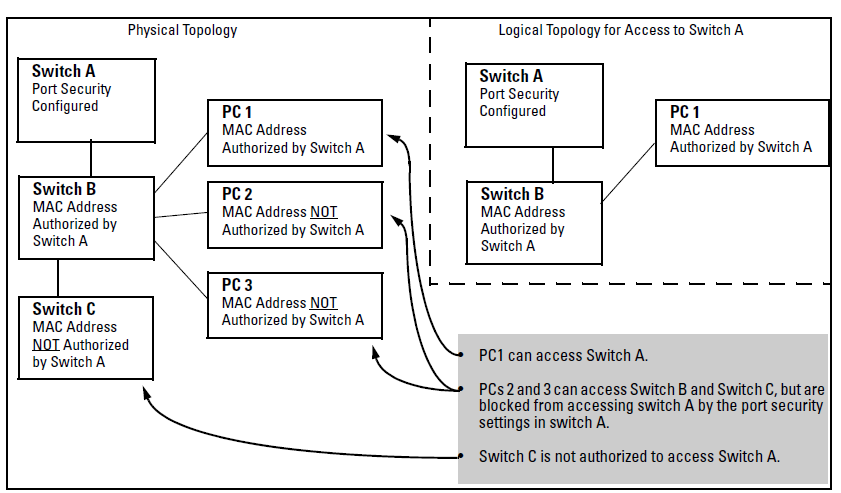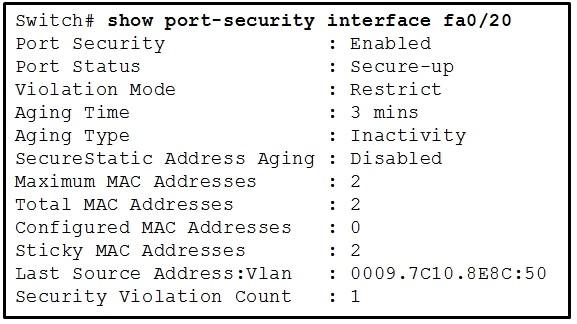

Switch are causing STP topology changes on Cisco IOS switches: Step 1 Identify the unicast flooding condition due to a STP topology change
Default cisco mac address aging time how to#
The following steps illustrate how to properly identify which ports on a Intents, it is possible that the PortFast feature is not configured properly on Topology for a port, use the STP PortFast feature, but even with the best of the Involved in the STP topology or in forwarding STP BPDUs. Should not be considered an STP topology change. Process therefore, the link up and down states on the respective NIC interfaces Servers, and any other end-devices do not need to participate in the STP The most common reason for excessive unicast flooding in steady-stateĬatalyst switch networks is the lack of proper host port configuration. Switch flush the MAC address table to minimize misdirected packet loss due to a Topology probably does significantly change, and it becomes essential that the Some of the legitimate reasons for topology changes include the following:Ī configuration change or hardware replacement by anĪ topology change due to these reasons is typically not avoidable as the In a steady-stateĬatalyst switch-based network, topology changes should be few and far between. Immediately flushed and the scenario is even more severe. In the case of Rapid Spanning Tree Protocol (RSTP), the MAC address is Is discussed in detail in Chapter 5, "Understanding and Configuring theĨ02.1D, 802.1s, and 802.1w Spanning-Tree Protocols," of CCNP Self-Study:īuilding Cisco Multilayer Switched Networks (BCMSN), Second Edition, (STP) to freshen stale MAC address table entries. Time of 300 seconds to 15 seconds in the case of 802.1D Spanning Tree Protocol Topology changes reduce the MAC address table aging time from the default One such event is due to spanning-tree topology changes in the network. MAC address table to be flushed more frequently than the configured aging time. However, other events in the network might cause the switch The preceding scenario is normal and common in most networks and is not aĬause for concern. The learning process starts again,Īnd, ultimately, the switch stops flooding the packet. The switch never learned that MAC address.

When the switch receives a frame destined to theĭevice after the idle period, the switch has to flood the packet again as though Increase the number of frames flooding in a VLAN.Īlso, because the dynamically learned MAC addresses need to stay current,Ĭatalyst switches have a mechanism to age out the MAC address table entriesĪfter a certain idle period. Nevertheless, there are configuration and spanning-tree events that might

Unicast flooding is a normal and expected behavior of Ethernet LAN networks. This issue is known as unicast flooding.Ģ Switch Floods Traffic Sourced from PC-A to PC-D to All Interfaces If this flooding is happening for unicast frames, network performance Flooding to all ports in a VLAN always occurs for broadcastįrames. MAC address hence, traffic from PC-A to PC-D is flooded to all interfaces in In Figure 2, the switch has not learned the PC-D The switch (that is, it is an unknown unicast), the switch floods the frame toĪll the interfaces in the VLAN. However, if the frame destination of the MAC address is not yet learned by Use the following command on Cisco IOS-based Catalyst switches to display theĭynamically learned MAC addresses for a specific VLAN: show mac-address-table dynamic vlan vlan-idįor CatOS-based Catalyst switches, use the following command to display theĭynamically learned MAC addresses for a specific VLAN: show cam dyanamic vlan-id Knows on which ports the PCs are located and, hence, is able to switch outįrames using the MAC address table without flooding the frame on all ports.ġ Switch Forwards Traffic Sourced from PC-A to PC-D Efficiently Maximum performance and efficiency is achieved if the switch already knows In addition, Catalyst switchesīuild MAC address tables used to forward frames at Layer 2 based on the unicast Troubleshoot these situations can significantly improve network performance.Ĭatalyst® Switches, at Layer 2, forward or switch frames based on theĭestination MAC addresses of the frames received. Having the ability to identify and successfully The followingĪrticle addresses how to detect and troubleshoot unicast flooding issues due to Unicast flooding occurs for many reasons in a switched network. Troubleshooting Unicast Flooding Due to Topology Changes


 0 kommentar(er)
0 kommentar(er)
